France
Visit to the Opera or haute couture ceremony in oriental fashion in turquoise silk tapestry and gold threads called Abba and originating from Syria. A visit of the same typology branded Worth is currently on display at the Worth exhibition at the Petit Palais in Paris. Cut with short basques at the back, long tails at the front, and elbow sleeves loaded with colored embossed silk fringes and gold trimming tassels. Ruffles of double rows of machine lace punctuated by a wide copper moire ribbon to tie in front. Soutache of gold cords applied in the back. No label. Copper satin lining. No flaws to note. Exceptional condition of preservation.
Dimension: Large size type 40 France. Front height 107 cm, back height 73 cm, shoulders 41 cm, chest 100 cm, fringes 10 cm.
The use of a Middle Eastern textile for Western fashion is relatively rare under the Second French Empire. The taste for orientalism in fashion is especially present in the 18th century, under the First Empire and during the first third of the 20th century. This visit is cut by a Parisian couturier from an abba or Ottoman imam's coat. It is a tapestry in silk rep woven with gold or silver metallic threads presenting a geometric graphic with vertical lines. Some abba could present ikat patterns or even a kilim-style weave. It was a specialty of Damascus and Aleppo nicknamed Zok from the name of a weaver from Aleppo that was used for furnishings or clothing. The few known examples of abba's use in fashion are seen in accessories, including slippers and reticules in the 19th century. Zok was also woven in Egypt and Lebanon, countries with extensive trade relations with France in the 19th century. In our example, the juxtaposition of oriental graphics mixed with French tapestry taste, combining lace, moire, and trimmings, is particularly bold, even prestigious.


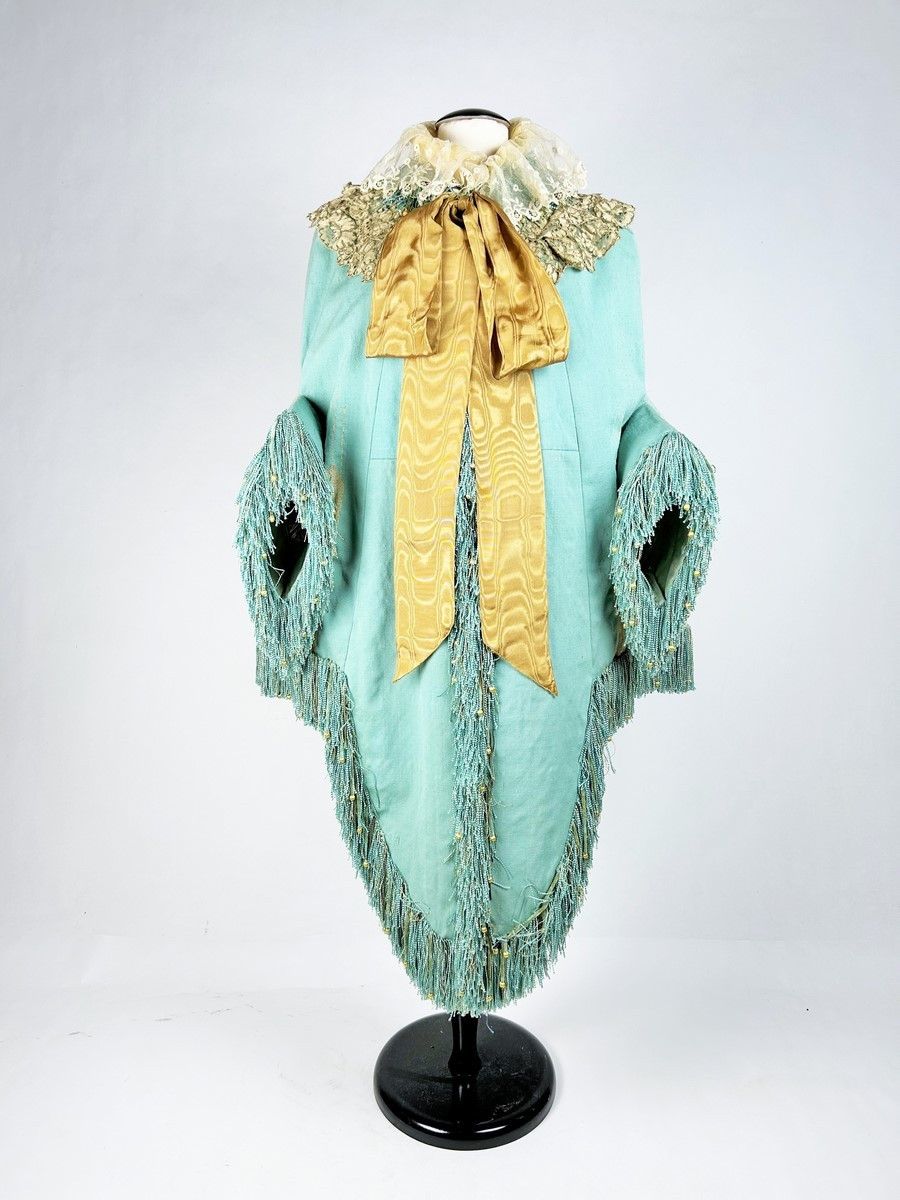






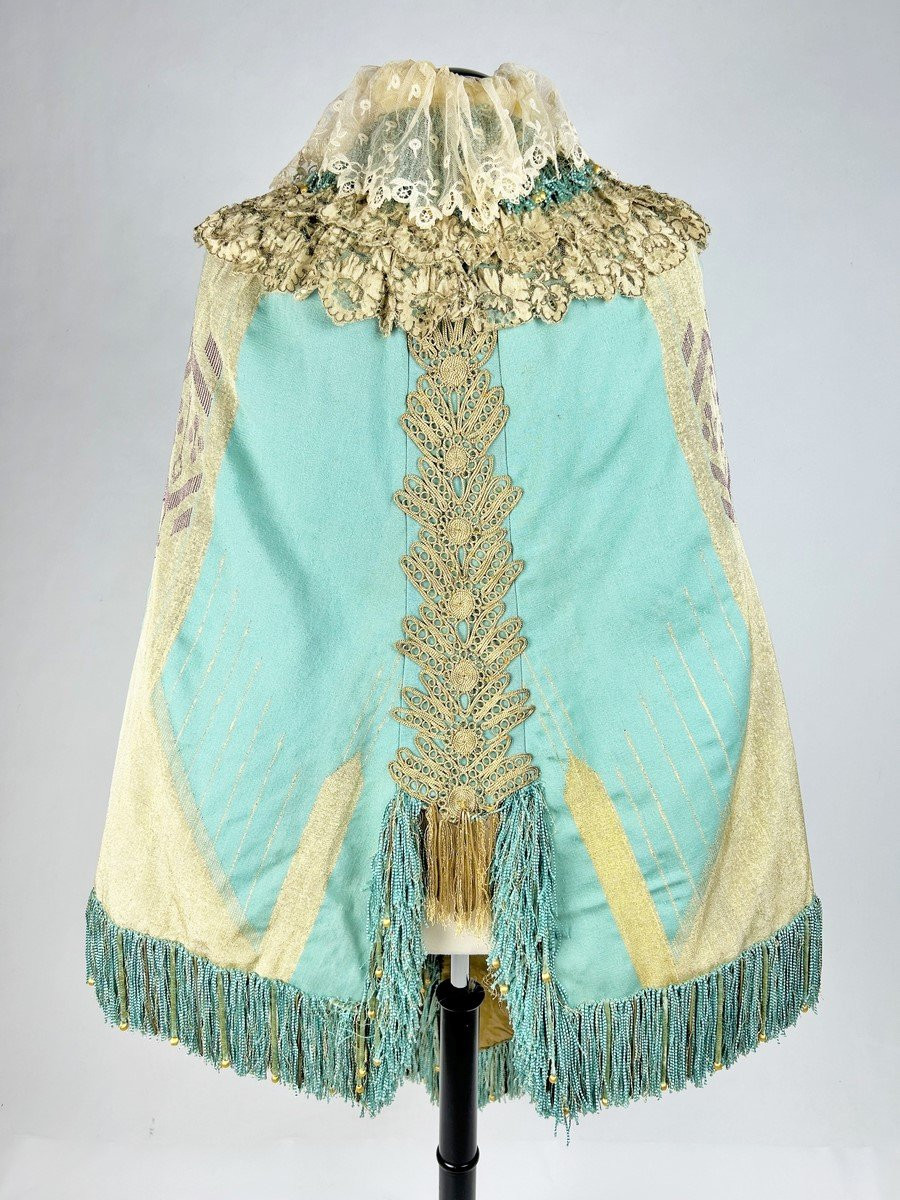
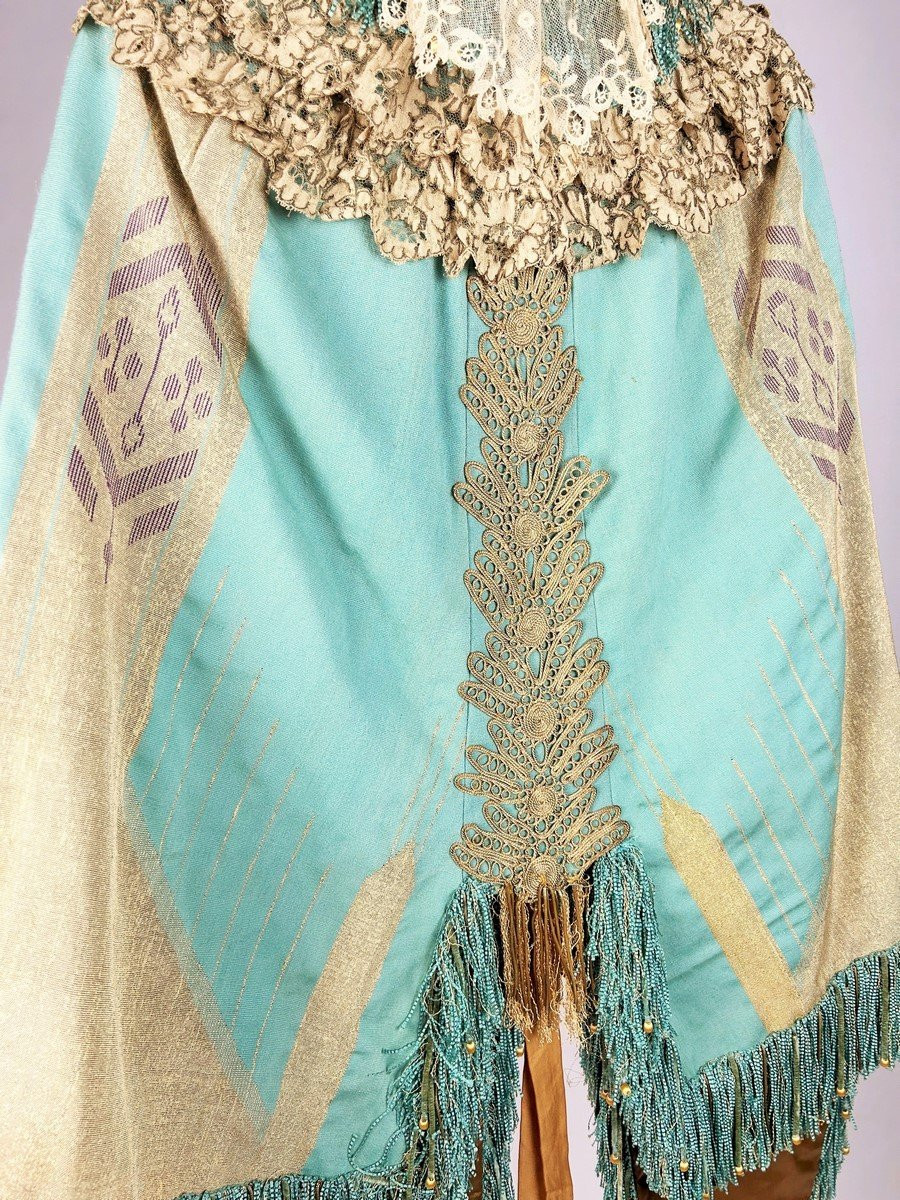

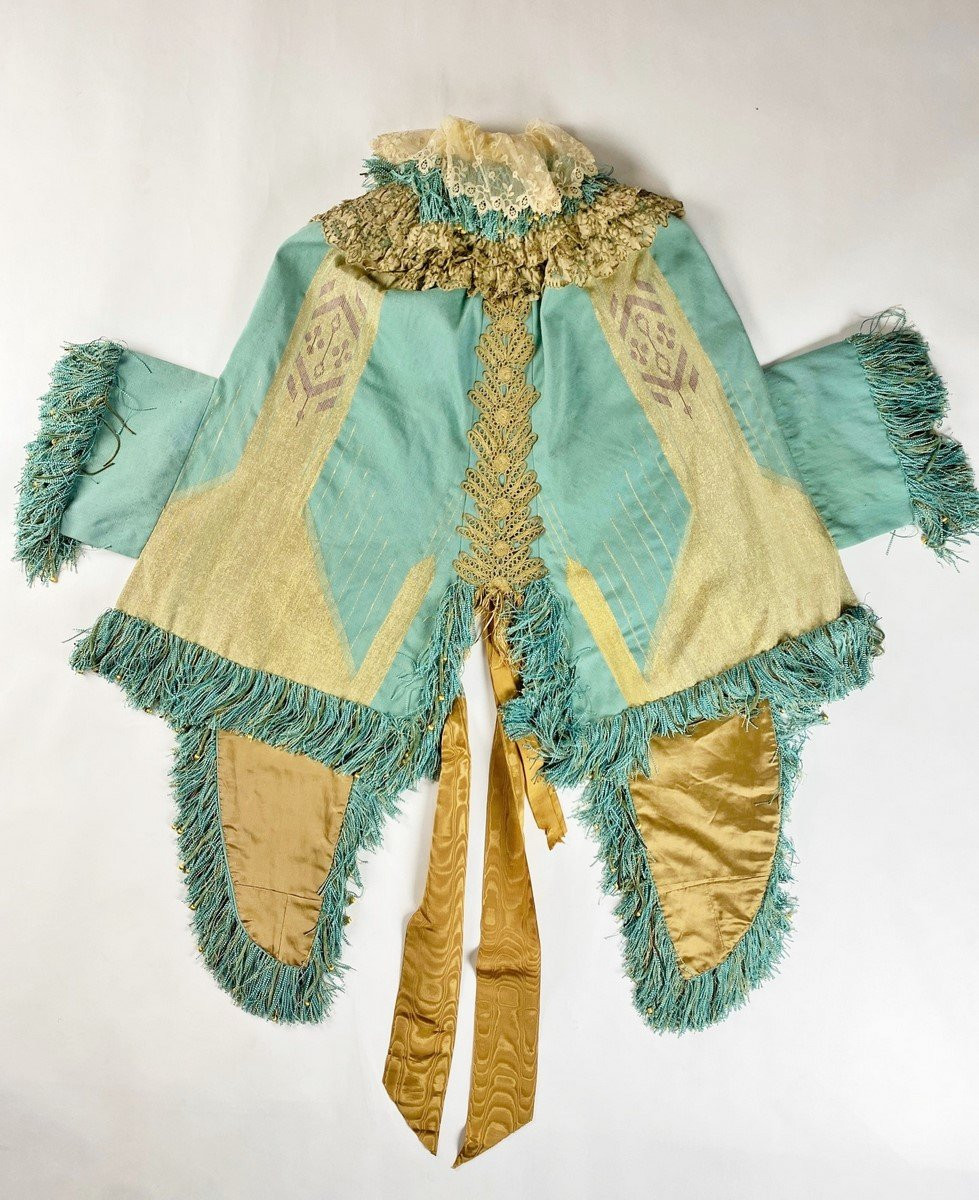















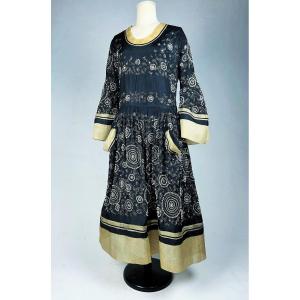
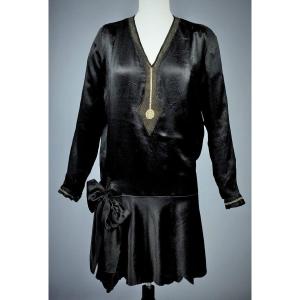



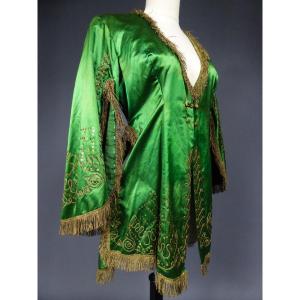

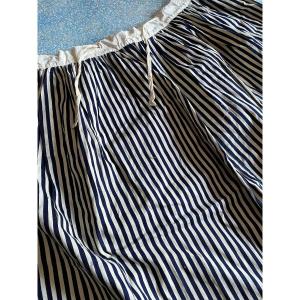





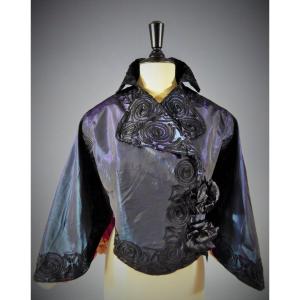


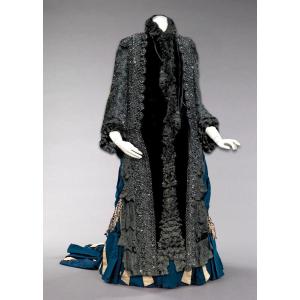





 Le Magazine de PROANTIC
Le Magazine de PROANTIC TRÉSORS Magazine
TRÉSORS Magazine Rivista Artiquariato
Rivista Artiquariato